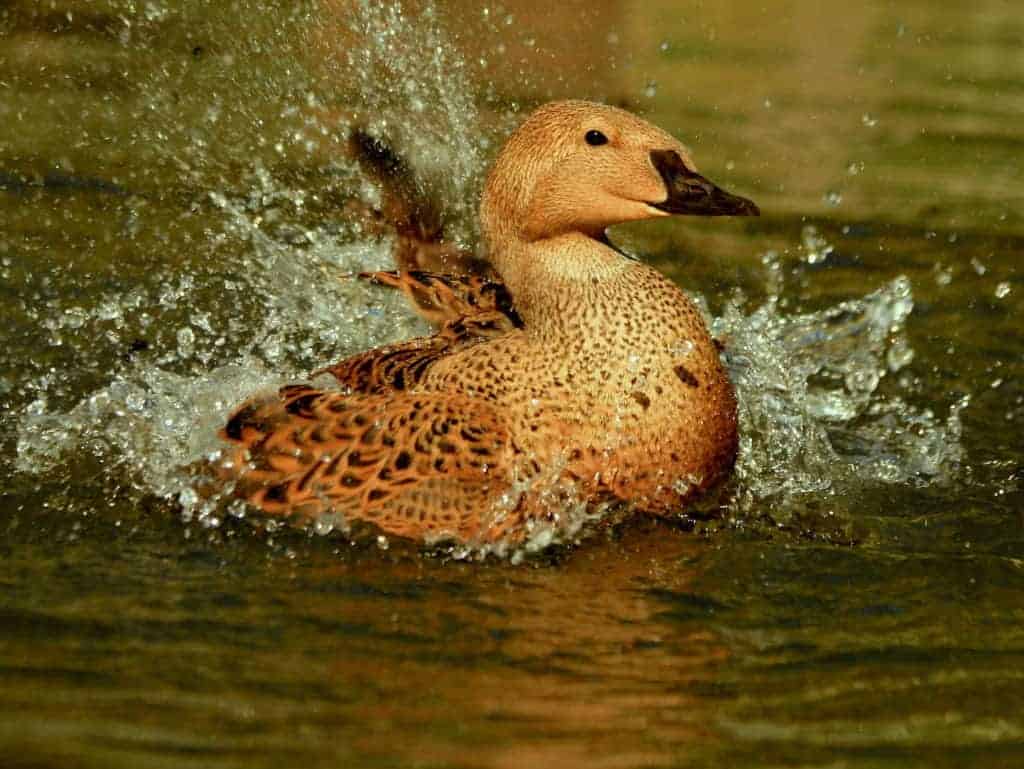King Eider

When not breeding, the King Eider spends most of its time out at sea. They may travel well inland to find ideal Arctic tundra nesting sites; small, shallow ponds with emergent vegetation. Young are led to salt or brackish water, where they are guaranteed open water. Like other eiders, broods may amalgamate to form crèches, with several females attending the group.

Somateria spectabilis
The King Eider is a spectacular sea duck that causes great excitement when it is spotted on British shores. Each year, individuals are seen amongst other sea ducks on our coastlines in winter. Slightly smaller and more compact than the Common Eider S. mollissima, the King Eider inhabits remote and inaccessible places. Difficulty of access to these areas gives a general idea that is less abundant than it really is.

King Eiders do not form dense colonies like Common Eider, but moulting drakes do gather in huge numbers whilst ducks are sitting. At all stages of plumage, the facial patterns of the bill and cere are unmistakable.


The King Eider has traditionally only been bred by a select few sea duck specialists, it is definitely not a species for the beginner. There are a number of collections now in Britain, Europe and North America breeding them successfully.
King Eiders will lay on open ground or beside rocks or tussocks, in a hollow near water. The duck lines her nest with down.
Slow to mature, it may be three or four years before the duck lays 4–5 pale olive-coloured eggs, which she incubates for 22 to 24 days. The drake hangs around for a while, but departs once incubation is underway.
Share this page